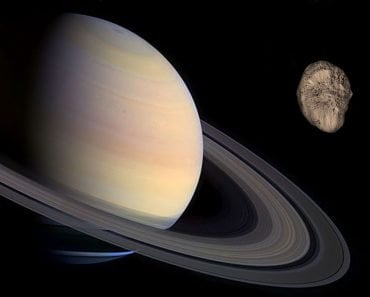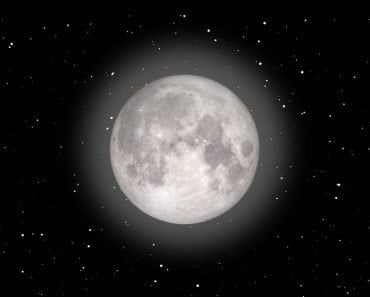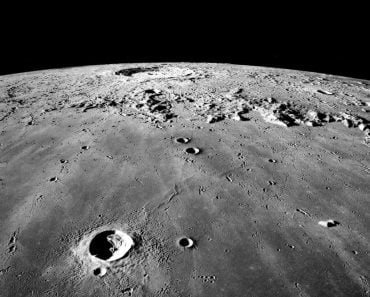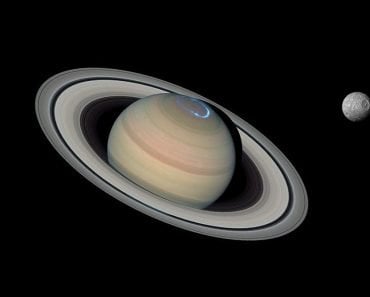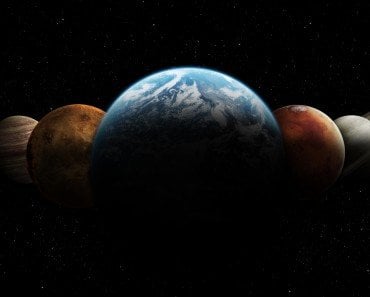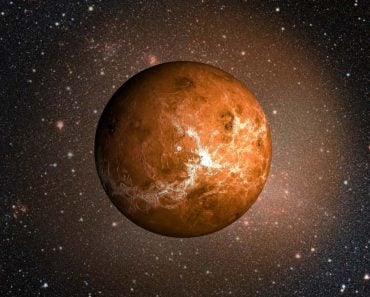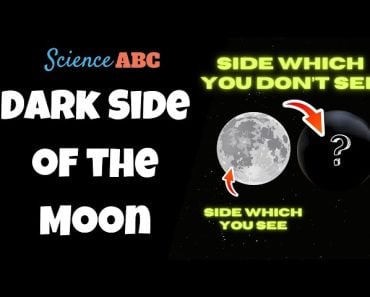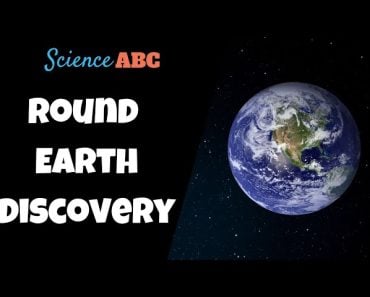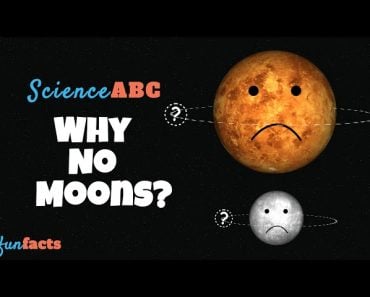Table of Contents (click to expand)
Under its thick ice surface, Enceladus contains an ocean that could potentially host a habitable environment, making it fascinating to scientists.
Enceladus is Saturn’s sixth-largest moon (of 83 moons), measuring just 500 kilometers across. William Herschel discovered it in 1789, and despite brief flybys during NASA’s Voyager missions, little was still known about the moon in the 1980s. However, images taken during the flyby indicated that Enceladus has many secrets, which caught the interest of scientists, even though the little moon is already located near the most captivating planet in our solar system.
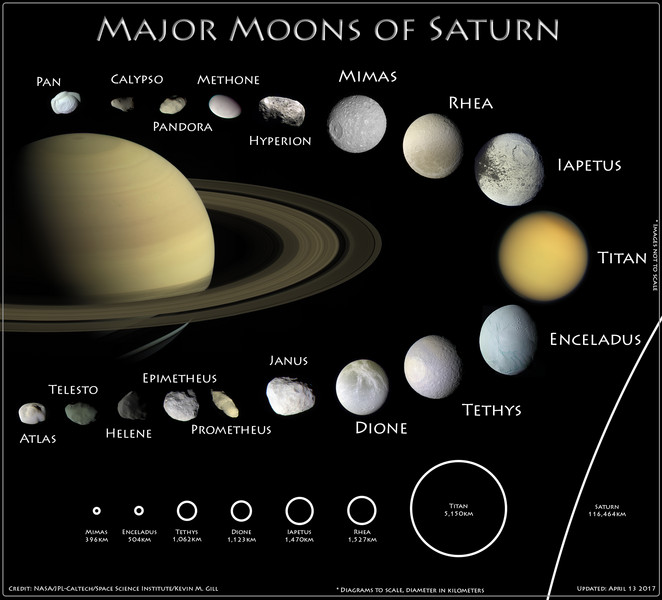
Just as the first six discovered Moons of Saturn, Herschel’s son named it after a Greek giant, since “Saturn” in Greek mythology is “Cronus,” the Titans’ leader (Cronus is also the name of one of Saturn’s moons). Furthermore, geological features on Enceladus are named after people, characters, or places, such as Aladdin, Alibaba, and Samarkand Sulci.
Fast-forward to 2005, when the Cassini spacecraft was sent on a mission to investigate Saturn and its system of several moons. Fortunately, Cassini was able to provide scientists with the data they wanted about Enceladus. Magnetometers aboard the spacecraft detected what seemed to be an atmosphere pushing against Saturn’s magnetic field, implying that the moon is releasing gases.
This sparked the scientific community’s interest, since they had discovered something they’d never seen before; the secrets of the icy Enceladus.
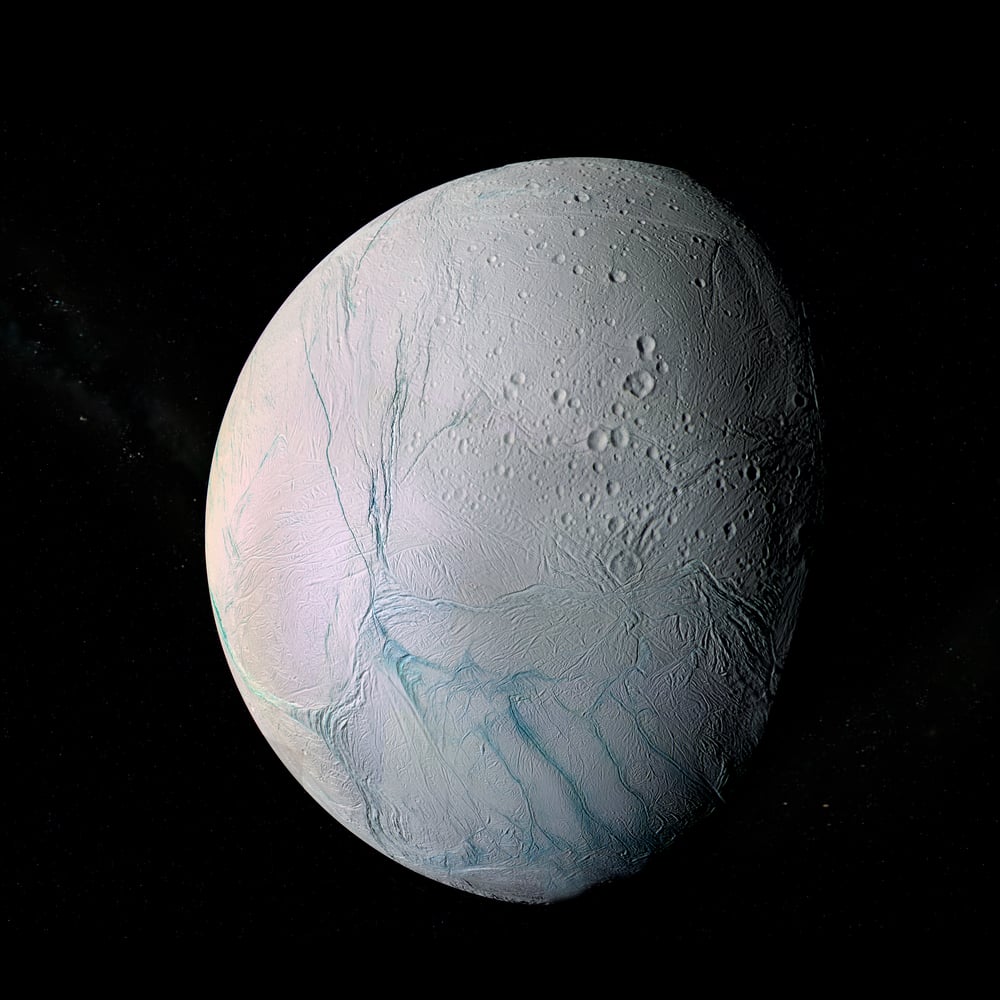
Recommended Video for you:
Inside Enceladus
Enceladus has primarily fresh and incredibly clean ice covering its surface. It has five distinct terrains spread throughout its surface, including one of the smoothest surfaces ever observed in our solar system!
Some regions have an abundance of craters, indicating an older surface, while others have grooves that appear to be crater-free, suggesting more recent formation. As a result, it must have “Water Volcanism,” which allows for the continuous renewal of damaged surfaces. It’s as though the Moon is constantly repairing itself! Therefore, it is thought to be geologically active, with a full salty ocean world hidden beneath its icy cover.
Due to its thick coat of ice, Enceladus is also the most reflective body in the solar system, thus the brightest body (after the sun, of course). Because it reflects so much sunlight, its mean that the noon temperature is -198 degrees Celsius, making it Saturn’s coldest Moon.
Cosmic Behavior And Internal Activity (Plumes)
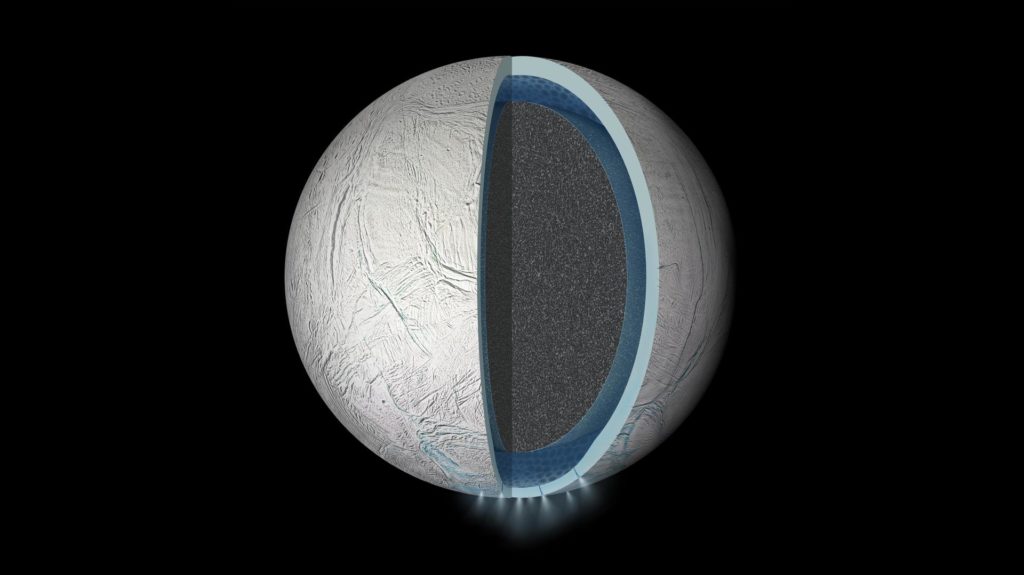
Enceladus orbits Saturn in an elliptical orbit and engages in a cosmic dance with Saturn’s other moon, Dione. As a result, it is subject to the gravitational pull from Dione and, of course, Saturn itself. These rough interactions cause a phenomenon known as tidal deformation, which forces the “Tiger Stripe” fissures in the South Pole to contract and relax constantly as it moves towards and away from Saturn. The muscle-like movement of these fissures causes chemicals and gases to be ejected out of the moon’s ice thick surface at around 1300 km/hr.
These plumes fired from Enceladus are eventually pulled in by Saturn’s gravity, to become a portion of its E-ring. Cassini was able to gather samples of the plume particles because they are constantly spewed from Enceladus. The spacecraft’s data revealed a striking resemblance to the chemicals present around hydrothermal vents on Earth, which are located deep in the ocean where sunlight does not reach.
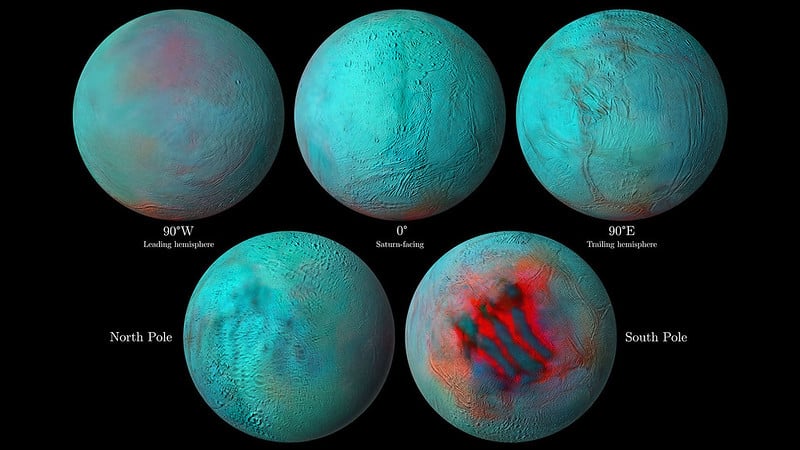
Potential Habitability
On Earth, these vents generate massive amounts of heat energy and organic chemicals, allowing a rich and diverse ecosystem to thrive. Some theories even suggest that it could be the first place where life developed on Earth! This is what makes Enceladus so intriguing. After 4 years of research, more and more evidence of a potentially habitable environment lying under Enceladus’ frozen surface was uncovered.
Silica crystals, carbon dioxide, large volumes of methane, and molecular hydrogen (H2) all contributed to the assumption that something similar to hydrothermal vents exists inside the tiny moon’s buried and subsurface global ocean.
Furthermore, scientists attempted to develop alternative explanations for why these chemicals exist on Enceladus, but none of these hypotheses fit. Hydrothermal vents were the only plausible explanation for the chemicals discovered in Enceladus’ plumes.
Note: This does not imply that life exists on Enceladus, but rather that life MAY have the POTENTIAL to evolve or thrive in the environment it contains.
Conclusion And Further Investigation
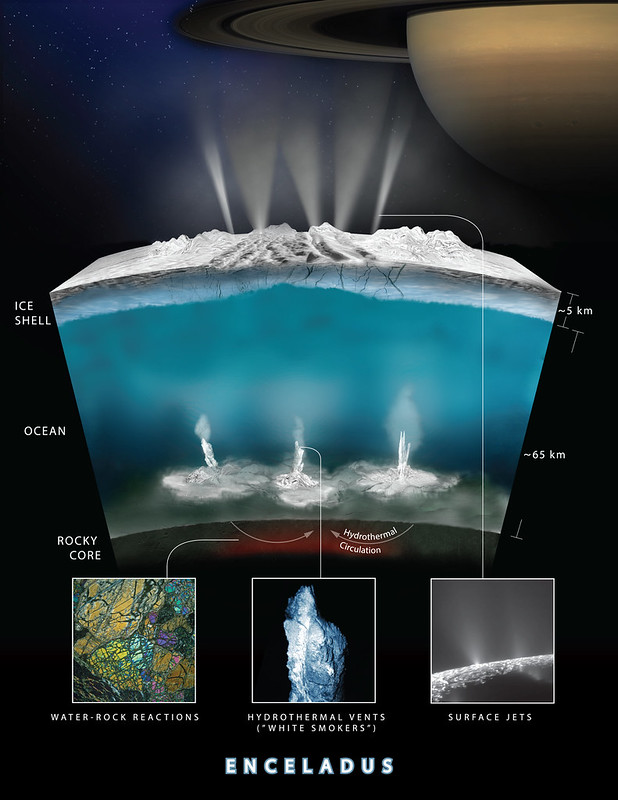
If something like these vents exists on Enceladus, there is a greater possibility that life may exist/develop on this tiny, chilly, ice moon full of magnificent mysteries. This makes Enceladus one of the most promising candidates for hosting extraterrestrial life. The next stage, according to NASA, is to launch missions solely dedicated to searching for bio-signatures on Enceladus.
As a result, Cassini has given mankind the go-ahead to look for life on this small, enigmatic moon. What might be hidden beneath the thick blanket of ice?
References (click to expand)
- Enceladus | Science - NASA Solar System Exploration. The National Aeronautics and Space Administration
- Nimmo, F., & Porco, C. (2014). Enceladus. Encyclopedia of the Solar System. Elsevier.
- Moore, P. (2005). SOLAR SYSTEM | Jupiter, Saturn and Their Moons. Encyclopedia of Geology. Elsevier.
- Neveu, M., Anbar, A. D., Davila, A. F., Glavin, D. P., MacKenzie, S. M., Phillips-Lander, C. M., … Yano, H. (2020, August 6). Returning Samples From Enceladus for Life Detection. Frontiers in Astronomy and Space Sciences. Frontiers Media SA.
- Hydrothermal Activity - NASA Solar System Exploration. The National Aeronautics and Space Administration
- McKay, C. P. (2008). Astrobiology. Encyclopedia of Ecology. Elsevier.
- Cassini at Enceladus: A Decade-Plus of Discovery. The National Aeronautics and Space Administration

